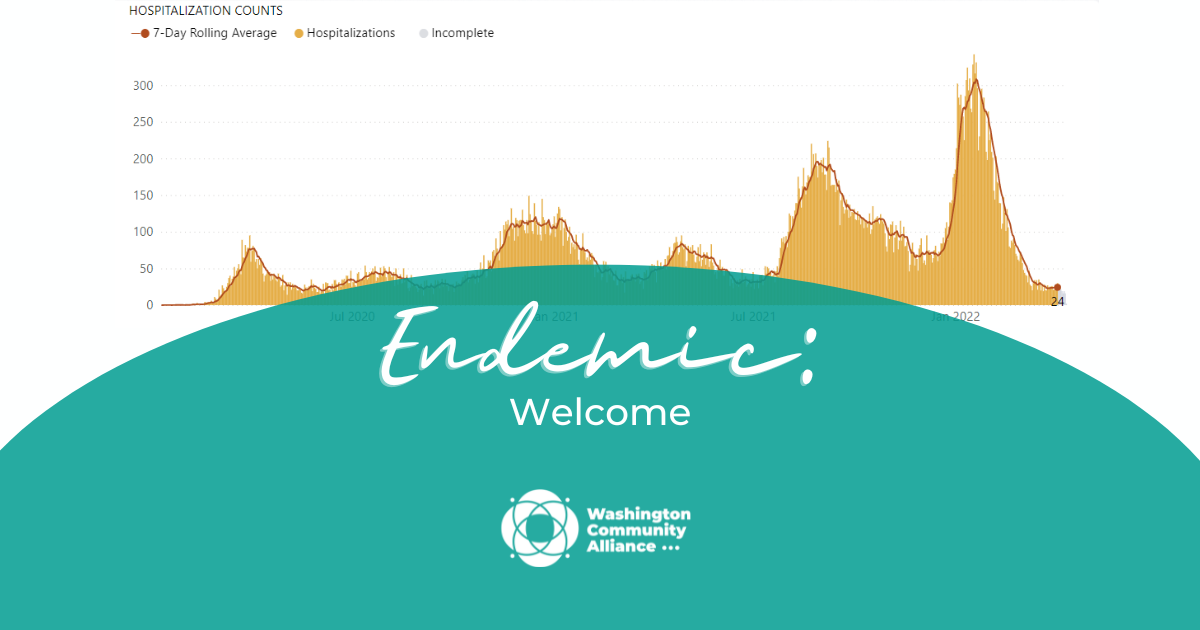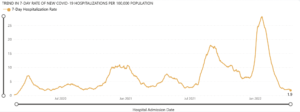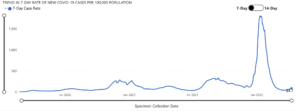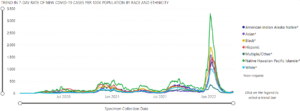
Friends— We’ve all been living through the trials and tribulations of the COVID-19 pandemic these last two years. Amidst all the learning curves that have come with it (online schooling, for example), we’ve witnessed how much media and once-trusted resources are losing credibility.
That’s why we want to do what we can to ensure our communities can trust the information they’re reading. Welcome to Endemic.
With the Omicron wave over, and its new cousin, the more transmissible variant BA2 arriving in parts of the world, it’s clear we’re on a long and winding road to COVID-19 becoming endemic. “Endemic” means a virus becoming always with us, omni-present, just like the Flu. It means new variants will emerge every year, but so will corresponding vaccines and precautions.
What have we learned from the last two years to best handle COVID as it becomes an endemic disease? What policies can best protect our communities’ health and prosperity going forward?
Every other week, we’ll give you the most up-to-date information on COVID-19 infections, vaccination rates, testing centers, and more.
🙏 COVID-19 Resources
- Order 4 free at-home COVID tests (note: any single address can only be used one time)
- Additional option to order free at-home COVID tests (WA only)
- Find vaccines near you
- Testing locations
📰 Recent News
Our state’s Board of Health unanimously decided COVID-19 vaccines will not be required for K-12 students next school year (this fall). The Board’s technical advisory group—tasked with researching whether a COVID-19 vaccine would meet all the scientific criteria needed to make the list of K-12 required immunizations—voted against adding the vaccines. The advisory group cited a lack of vaccine data for school-aged kids and potentially unpredictable social impacts from adding COVID vaccines to the list.
You also may have heard about a federal Florida judge’s decision to rule against the US government’s right to mandate masks with air travel. As for public transit generally, check in with your City and County! Not all have dropped the mandate. The latest update here is that the Biden administration will appeal the ruling—now that the CDC agreed. The case will go to the Atlanta-based 11th Circuit court of federal judges.
📊 Washington’s COVID-19 Weekly Snapshot
As of April 19th, 81.6% of the population 5 years old and up have received at least one vaccination; 74.2% have received it at least twice. But beware! Vaccination rates differ substantially by county. San Juan and King counties are currently the most vaccinated, at 81%, while Stevens County (Colville) is at 35%. Data for this and the graph below come from our state’s Department of Health.
Hospitalization rates 🏥

The latest data point we had at the time of the e-mail send was April 11th, with an average of 1.9 hospitalizations per 100,000 people. Against Omicron, the vaccines were not as effective at reducing infection but do still powerfully reduce the risk of hospitalization by 90-94%. Research from the UK and Denmark suggests that BA2 is similar to Omicron and does not carry a higher risk of hospitalization.
As COVID-19 becomes less severe and more transmissible with variants like Omicron and BA2, hospitalization is a more useful metric than case counts to measure the severity of the disease.
Slight uptick in cases 📈

While hospitalizations are generally a better measure of how severe COVID is—and official case counts are undercounting as more people test at home—case counts are still helpful to understand how the pandemic is progressing. Cases have had a slight uptick since the middle of March, due to the BA2 variant.
King County and surrounding counties have the highest case rate, whereas Eastern Washington has a much lower rate.
Right now, the rate of the increase does not look as exponential compared to Omicron’s January wave. If cases continue to increase and hospitalizations follow, we might see the return of some COVID-related mandates from our state government.
Infection rates by race/ethnicity 😷

With a few exceptions, people of color have had higher rates of infection than white people. This unjust imbalance can be partially explained because more people of color work essential, non-remote jobs, and have more underlying health conditions related to environmental racism.
For more detailed data, like COVID-19 data by county, visit Washington DoH’s Covid-19 Data Dashboard.
That’s all for now! In our next newsletter, we’ll dive into mask efficacy and how to keep the air in our homes, schools, and buildings safe.
What do you think? Have any questions? Tweet us your thoughts @WACommAlliance.
Keep up on Washington’s latest COVID-19 trends, new research, and more through our Endemic newsletter.

